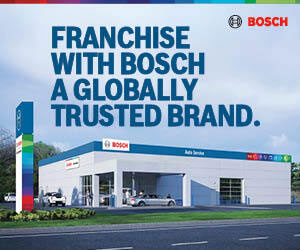How will you address underperforming restaurants in 2025?

It’s been a rocky road for some (but not all) franchised restaurant brands this year. Restaurants in general have been rocked by the usual external forces: changing consumer tastes, population shifts, tightened family budgets, mandated wage increases, and a diminishing workforce with new and heightened expectations about what it means to be an employee in 2025. Oh, and tariffs. You know the litany… you’re living it every day, and for some, every night. So what’s a franchisee to do to turn around an underperforming location?
A July 2025 blog from Push, a restaurant management firm, digs into the current state of franchised restaurants, with examples of how Red Lobster, TGI Fridays, Noodles & Company, and Dine Brands are pursuing turnaround strategies. The blog also discusses five restaurant brands “defying the downturn,” and wraps up with a section on how multi-location restaurants can succeed—along with a cautionary note: “While the strategies may seem promising, only time will tell if they will lead to sustained success and long-term recovery.”
In addition to what the franchisees below say about how they’re dealing with underperforming locations, check out this four-part series from Paul Segreto on transforming underperforming restaurants. He focuses on indie restaurants, but his advice applies equally to franchised restaurants.
Like what you see here? Tell us! Already subscribed? Tell your friends!
Have more questions? If you have a topic you’d like to see in a future issue, send us an email.
Franchisee Bytes: What was your first job?
CHUCK DORAN
Company: Owner, Far Hills Development, LLC
Brands: 12 Lee’s Famous Recipe Chicken
Years in franchising: 11+
We believe the success of a restaurant ultimately hinges on the strength of its General Manager, both in terms of day-to-day operations and profitability. At the same time, we recognize that external market forces also can impact sales across the QSR industry. The real challenge is distinguishing between systemic performance issues and market-driven slowdowns.
To identify these issues, we use daily data tracking and key performance indicators to help us pinpoint which locations need deeper support. We find that many performance challenges stem from difficulties in building and developing strong teams through the GM. Hiring the right people and setting them up for success through effective training is often the biggest differentiator between thriving and struggling restaurants.
Our District Managers will engage the GMs to participate in the interviewing and hiring decision process, from completing interviews with them to properly identifying a quality candidate likely to become a long-term employee. We set a goal of hiring one outstanding candidate per week.
We then have the DM work with the GM to put together a training schedule for the new hire that incorporates time for a thorough orientation (with the DM in attendance), time allotted for review of training materials, one-on-one time scheduled with the GM, and one-on-one time with an established, successful employee in the restaurant.
Finally, we conduct a first week recap with the new employee, GM, and DM to review the trainee’s first week, allowing open discussion on the quality of training, the trainee’s comfort level in their new position and commitments to fill any gaps and plan their second week much like the first.
By hiring thoughtfully and training intentionally, we reduce turnover and build a culture of development and accountability. That foundation not only stabilizes underperforming restaurants, it also sets the stage for long-term growth. A strong internal culture drives stronger external results.
FRANKIE RADOCHONSKI
Brands: 3 Pop’s Beef locations in the Chicagoland region
Years in franchising: 4.5
It’s easy to default to blaming the manager or assuming the customers are just too picky, and to think that replacing leadership or streamlining the menu will automatically fix everything. But the first step should always be to ask the obvious: Why are we underperforming? Where are we falling short? Are we strong during lunch but struggling at dinner, meaning we need to adjust our approach for a specific time of day? Or is traffic slow across the board? Understanding the root of the issue is critical before making any major decisions.
Once the issue is identified, I’d start by spending time with the profit-and-loss statements. Am I losing money because of excessive waste? Is my labor cost too high and needs to be trimmed slightly? That’s always a double-edged sword because cutting too much can hurt customer satisfaction, but leaving it too high can quickly drain your capital. I’d also evaluate the menu mix: Is it overly complicated or inflated to the point that it’s creating operational challenges? Simplifying the menu not only helps with execution, it also can reduce labor needs. From there, I’d review item pricing. These days, it’s tough to get a great deal on product, but vendors will fight to keep your business. We should always be proactively looking for the best possible pricing on our products.
After identifying the key factors, I’d jump into the store and be physically present, not just watching cameras or asking managers what’s going on. You have to get in the trenches with your team. That’s when you really start to see where the deficiencies are. I’d also look at the business from the customer’s perspective. I’d bring in secret shoppers I know and trust to honestly evaluate the guest experience. Is the store clean? Is the food up to standard? Are the cashiers creating a welcoming and positive experience? These details matter and often reveal exactly where improvements need to be made.
When I feel like I have fine-tuned operations to the best of my ability, I’d shift my focus to aggressively marketing the restaurant. There are a lot of free tools out there that, with a bit of effort, can make a big impact. Delivery platforms have become a critical part of the restaurant business, and many of them offer marketing support, whether that’s boosting your visibility in the app or offering “no delivery fee” promotions. It all comes down to communicating with your rep and figuring out how to make those platforms work for you. That’s the approach I’d take if I were stepping in to turn around an underperforming restaurant.
JOHN METZ
Company: CEO & Founder, RREMC Restaurants
Brands: 60 Denny’s, 5 Hurricane Grill & Wings, 3 Keke’s Breakfast Cafe, 2 Wahoo’s Fish Taco
Years in franchising: 23
John Metz is Past Chair of the 2012 Multi-Unit Franchising Conference and former franchisor of Hurricane Grill & Wings, which he sold to FAT Brands in 2018.
We categorize all our underperforming stores and have an internal, cross-departmental team that focuses on this. I give them 6 to 9 months to turn a store around. We have 12 stores losing money right now and have to turn them around.
After those 6 to 9 months, we look at closing the unit. Sometimes you just have to cut the cord. We find a subtenant or try to buy ourselves out of the lease after 1 or 1½ years. I don’t like to give up on a store. (I’m much worse than my team when it comes to that.) We’ve closed two so far this year and there probably will be two more. The good news is we’re replacing them with new Denny’s in a different place, even a different state.
Here’s my formula for turning a store around—in this order:
- Management. You must have the right manager and team in place, the right general managers and the right system managers.
- Staffing. The unit in question must be fully staffed.
- Facilities. Both the back and front of the house must be up to brand standards.
- Marketing. Once the first three items are addressed and things are moving in the right direction, only then do you focus on marketing. Otherwise you’re wasting your money.
FRANCHISEE BYTES
What was your first job?
My first official job was with the U.S. Army. I joined when I was 17 and served for four years before becoming a disabled veteran.
—Yousuf Nabi is Owner & CEO of Gotham IP Inc., which operates 10 Mrs. Fields, 10 Sbarro, and 4 TCBY locations. He’s been in franchising for 5 years.
My first job was as a cashier at a gas station when I was 14. It was an experience that introduced me to the importance of hospitality and what it means to lead with a servant’s heart. Even at that young age, I understood the value of treating people with respect and how small moments can create lasting impressions.
—Lawrence Kourie is Owner-Operator of 22 Dave’s Hot Chicken restaurants. He’s been in franchising for 12 years.
A cashier at Carl’s Jr. My first day on the job was my 18th birthday.
—Alex Karcher is Operating Principal of JCK Restaurants, which operates 61 Carl’s Jr., 11 Jersey Mike’s, 8 The Human Bean, 8 Dave’s Hot Chicken, and 1 Hawaiian Bros. He’s been in franchising for 14 years.
As a cook at the local drive-in restaurant. I started on the day I turned 14.
—Mike Kulp is CEO of KBP Brands, which operates 828 KFC, 119 Arby’s, 85 Sonic, and 56 Taco Bell locations. In 2016, he served as Chair of the Multi-Unit Franchising Conference. He’s been in franchising for 26 years.
As a dishwasher in India when I was 16.
—Yunus Shahul, with his brother, Thameem, is owner of Smartfoods Group, which operates 24 Cousins Maine Lobster units and 1 German Doner Kebab. He’s been in franchising for 7 years.
When I was 14, I vacuumed and emptied the trash at my dad’s business, which was an optical shop in Bellevue, Nebraska.
—Bryce Bares, Franchise Owner, QSR Services LLC, which operates 30 Dunkin’ and 1 Baskin-Robbins locations. He’s been in franchising for 13 years.
I started out as a paperboy at the age of 12, rolling up newspapers and delivering them by bike in local neighborhoods.
—Jacob Webb, Franchise Owner, MPUT Holdings LLC, which operates 22 Marco’s Pizza and 4 Tropical Smoothie Cafe locations. He’s been in franchising for 11 years.
I was a dishwasher at my parents’ A&W Restaurant when I was 13.
—James Brajdic is co-winner of the 2025 Single-Brand Leadership MVP for achieving leadership with a single brand. He is president of Customer Maniacs and Green Bay A Dub, which operates 13 A&W restaurants. He’s been in franchising for 23 years.
When I was 16, I got my first job at Champions Go-Kart Track in Woodbridge, Virginia. Years later, we built a Dunkin’/Baskin-Robbins on the same land where the track once stood. Talk about coming full circle.
—Jerome Johnson is a Franchisee at John Cove Management and Jbar Inc., which operates 10 Dunkin’, 4 Sonic Drive-In, 4 Baskin-Robbins, and 1 Jersey Mike’s. He’s been in franchising for 21 years.
Share this Feature
Recommended Reading:
| ADVERTISE | SPONSORED CONTENT |
FRANCHISE TOPICS
- Multi-Unit Franchising
- Get Started in Franchising
- Franchise Growth
- Franchise Operations
- Open New Units
- Franchise Leadership
- Franchise Marketing
- Technology
- Franchise Law
- Franchise Awards
- Franchise Rankings
- Franchise Trends
- Franchise Development
- Featured Franchise Stories
| ADVERTISE | SPONSORED CONTENT |

$250,000
$84,500





 The multi-unit franchise opportunities listed above are not related to or endorsed by Multi-Unit Franchisee or Franchise Update Media Group. We are not engaged in, supporting, or endorsing any specific franchise, business opportunity, company or individual. No statement in this site is to be construed as a recommendation. We encourage prospective franchise buyers to perform extensive due diligence when considering a franchise opportunity.
The multi-unit franchise opportunities listed above are not related to or endorsed by Multi-Unit Franchisee or Franchise Update Media Group. We are not engaged in, supporting, or endorsing any specific franchise, business opportunity, company or individual. No statement in this site is to be construed as a recommendation. We encourage prospective franchise buyers to perform extensive due diligence when considering a franchise opportunity.